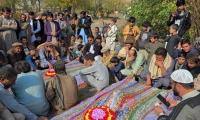President Obama should be given props for the progress made in thawing US-Cuban relations, but there’s a piece of unfinished business that he could – and should – still attend to: returning the US Naval Base in Guantanamo to the Cuban people. In doing so, he could also solve another dilemma that has plagued his administration: closing the Guantanamo prison.
In November 2015, CODEPINK brought 60 delegates to the city of Guantánamo for an international conference about the abolition of foreign military bases. To delve more into the impact of the Guantánamo naval base on the Cuban people, we took a trip to Caimanera – a small town of 11,000 people that abuts the US Naval Base on the southeastern coast of Cuba.
Caimanera is hot and humid. Small, colourful but dilapidated houses pack the narrow town streets. There are crowded sidewalk cafes where highly coveted WiFi is available. In the middle of town there’s an impressive central plaza, decorated by statues of Cuban revolutionary heroes, and on the streets around the square there are schools, a community cultural centre, Committee of the Defence of the Revolution offices, and more.
Since 1903, Caimanera has been a neighbour to a 73-square-mile US naval base. Before the Cuban Revolution in 1959, Caimanera bustled with visiting American civilians and Marines from the base who poured millions of dollars into the tourist industry. Thousands of Cubans were employed on the naval base. After the revolution led by Fidel Castro, the US severed relations with Cuba and US military personnel were restricted to the base. The Cuban government stopped cashing the US annual $4,085 rent checks and demanded that the land be returned to the Cuban people.
As our buses pulled into the town, it was as if the entire community had come out to greet us. Men in suits, women in work uniforms, people holding large banners calling for the closure of foreign military bases, and hundreds of children in their school uniforms all lined the streets, smiling at us and waving Cuban flags. In fact, the whole town had come out to greet us, and they looked positively thrilled.
One part of the US Naval Base that our Cuban hosts found to be particularly egregious is the infamous Camp X-Ray and the other buildings that form the US military prison that has housed 779 prisoners from the US ‘war on terror’ since January 11, 2002.
January 11 marks 14 long years since the first prisoners arrived at the notorious prison. Human rights activists and advocates across the world are demanding Obama utilise his executive powers to close the prison and put an end to this blight on America’s history.
Blaming Congress for the hold up in closing the prison, President Obama has run out of excuses. Some of Obama’s top Guantánamo experts have argued that the President doesn’t need Congressional approval to close the prison. After all, President Bush didn’t get Congressional approval when he opened it. They claim that according to the Constitution, Congress cannot specify facilities in which particular detainees must be held and tried.
In his last year in office, President Obama must right two wrongs that would help salvage his legacy: close the US military prison and announce the willingness to close the US Naval Base Guantanamo and return the land to the Cuban people.
President Obama has said he’s like to visit Cuba before leaving office. Wouldn’t it be grand if he visited Caimanera to make an announcement that the prison would be closed and the lovely Cuban seaport would finally be returned to its rightful owners? The people of Caimanera – indeed people the world over – would come out to cheer him.
This article has been excerpted from: ‘Send Obama to Gitmo’
Courtesy: Counterpunch.org
MPAs ask for their salaries and benefits to be at par with high court judges and exempt from tax
This system fosters and places premium on VIPs, facilitating VIP culture, which is alive and kicking
Imagine this waste covering over 15,500 cricket stadiums, piled three meters deep every year
If there is one thing that can be gleaned from politics today, it is that we no longer speak same language
Postman argues that “typographic mind” was yielding to “televisual mind”
Pakistan is well poised to meet opportunities that Artificial Intelligence will offer for developments in industries







